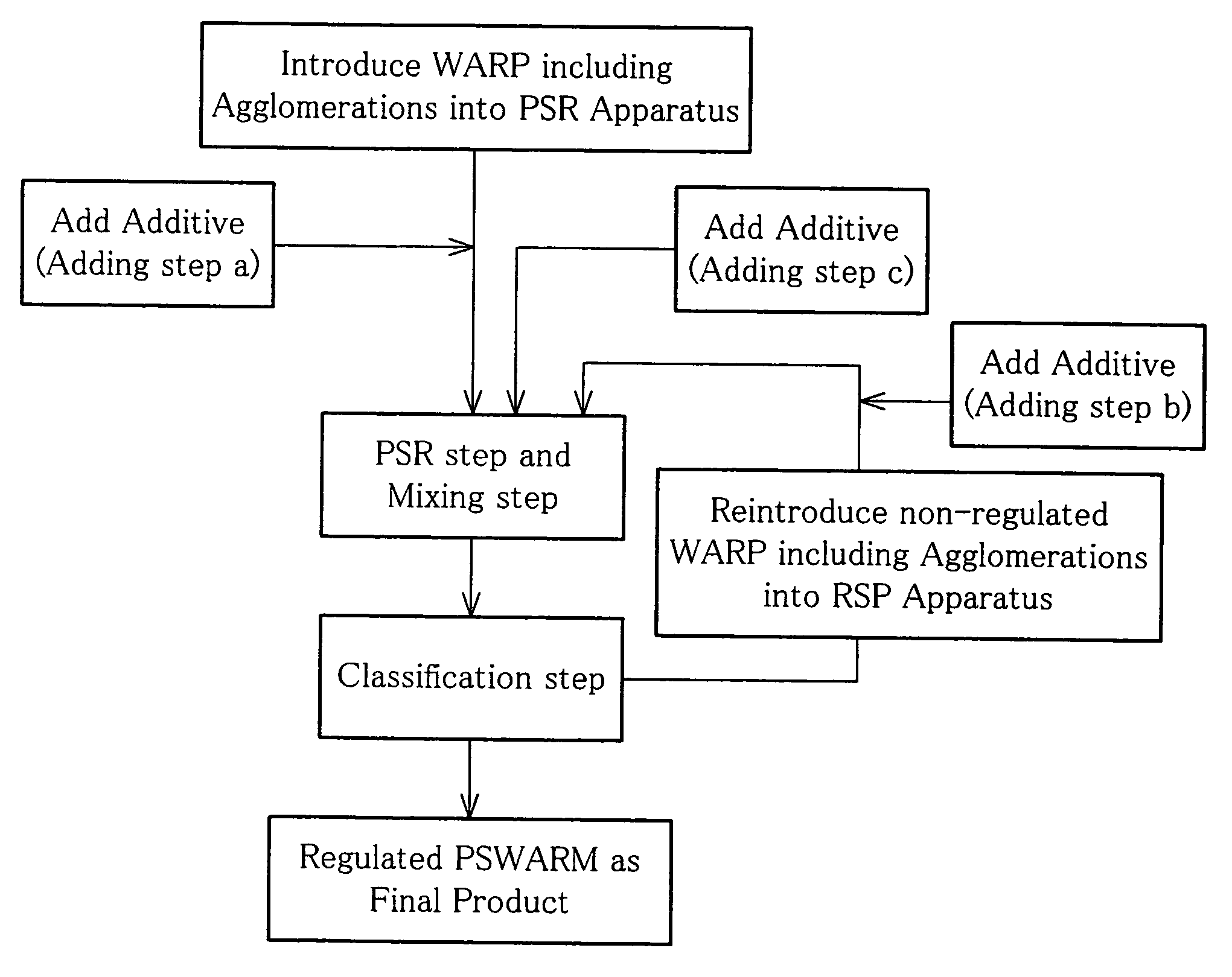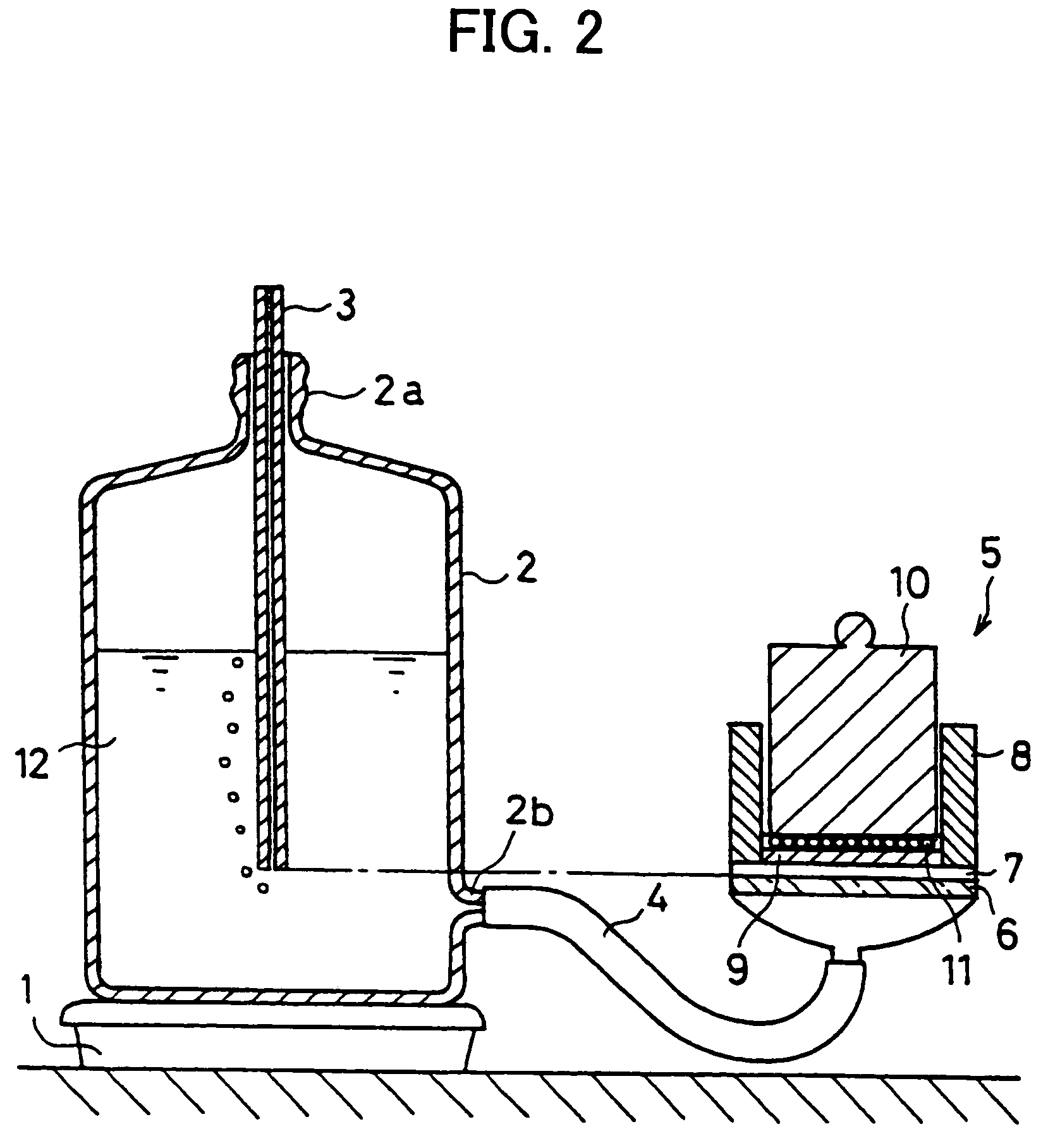Method of producing particle-shape water-absorbing resin material
a technology of water-absorbing resin and resin particles, which is applied in the direction of bandages, chemistry apparatus and processes, and other chemical processes, can solve the problems of water-absorbing resin particles agglomerating with water-absorbing resin particles of additives, agglomeration of water-absorbing resin particles with additive particles, so as to avoid deterioration of water-absorbing properties
- Summary
- Abstract
- Description
- Claims
- Application Information
AI Technical Summary
Benefits of technology
Problems solved by technology
Method used
Image
Examples
example 1
[0151]In a kneader provided with two sigma blades, a monomer aqueous solution was prepared, the monomer aqueous solution containing sodium acrylic acid, acrylic acid, and water, and having a monomer content of 38% by weight and a neutralization ratio of 75 mol %. Into the monomer aqueous solution, polyethyleneglycoldiacrylate (average ethyleneglycol unit number: 9) was dissolved, as an internal cross-linking agent, in such an amount that polyethyleneglycoldiacrylate content was 0.03 mol % (with respect to the monomer).
[0152]Next, nitrogen gas was introduced into the monomer aqueous solution so as to reduce oxygen dissolved in the monomer aqueous solution, and replace gas inside a reactor (kneader) with the nitrogen gas. Then, a temperature of the monomer aqueous solution was adjusted to 22° C. while rotating the two sigma blade. After that, sodium persulfate and L-ascorbic acid were added as polymerization initiators to the monomer aqueous solution in such amounts that sodium persul...
example 2
[0163]The same process as Example 1 was carried out except that instead of the silica particulates, 0.01 parts by weight of diethylenepentaaminepentacetic acid (average diameter of 80 μm), which was a chelating agent, was added. Thereby a particle-shape water-absorbing resin material (2) according to the present invention was obtained. The particle-shape water-absorbing resin material (2) had CRC of 36(g / g), and AAP of 24(g / g).
[0164]Moreover, in a 50 ml beaker, 1 g of the particle-shape water-absorbing resin material (2) was swelled with 25 g of a physiological saline containing L-ascorbic acid by 0.05%, and then left to stand at 37° C. for 24 hours. A swelled gel thus obtained retained its shape and was kept solidified (not-flowable) even after 24 hours.
[0165]For the purpose of comparison, water-absorbing resin particles (comparative particle-shape water-absorbing resin material (b)) into which diethylenepentaaminepentacetic acid was not mixed were left to stand in the same manner....
example 3
[0166]The same process as Example 1 was carried out except that instead of the silica particulates, 0.5 parts by weight of activated carbon (average diameter of 100 μm) was added. Thereby a particle-shape water-absorbing resin material (3) according to the present invention was obtained. The particle-shape water-absorbing resin material (3) had CRC of 36(g / g), and AAP of 24(g / g).
[0167]Moreover, in a 50 ml beaker, 1 g of the particle-shape water-absorbing resin material (3) was swelled with 25 g of adult urine, and then left to stand at 37° C. for 24 hours, and then smelled. Smell of urine was almost undetectable.
PUM
| Property | Measurement | Unit |
|---|---|---|
| weight-average diameter | aaaaa | aaaaa |
| Pressure | aaaaa | aaaaa |
| temperature | aaaaa | aaaaa |
Abstract
Description
Claims
Application Information
 Login to View More
Login to View More - R&D
- Intellectual Property
- Life Sciences
- Materials
- Tech Scout
- Unparalleled Data Quality
- Higher Quality Content
- 60% Fewer Hallucinations
Browse by: Latest US Patents, China's latest patents, Technical Efficacy Thesaurus, Application Domain, Technology Topic, Popular Technical Reports.
© 2025 PatSnap. All rights reserved.Legal|Privacy policy|Modern Slavery Act Transparency Statement|Sitemap|About US| Contact US: help@patsnap.com



